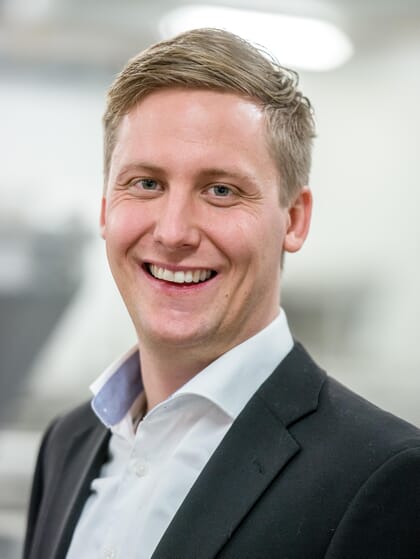
Rudi Ripman Seim will oversee fish health and welfare in Benchmark Genetics for salmon operations in Norway, Chile, Iceland, tilapia in USA and shrimp in the Americas and Asia
Seim, who has been employed in the company since 2012, comes to the newly created role having been head of fish health. He has an MSc in aquamedicine biology from University of Bergen and an MBA from Norwegian School of Economics.
In his new position Seim will be responsible for the relations with the partners and ensure that the company has sufficient production capacity for biosecure broodstock and eggs to ensure a year-round supply to its customers. In line with this, he will ensure that production fulfils all requirements to allow Benchmark Genetics Norway AS to resume exports of ova.
Seim will continue to have the overall responsibility for fish health and welfare in Benchmark Genetics for salmon operations in Norway, Chile, Iceland, tilapia in USA and shrimp in the Americas and Asia. To support him in this role, Benchmark Genetics will recruit a new salmon fish health manager, who will be responsible for the operational tasks for the company’s salmon units, in Norway and internationally. This position will be located in Bergen.
Jan-Emil Johannessen, head of Benchmark Genetics, says: “Production of broodstock has historically taken place in the sea with a land transfer of selected broodstock some months before egg production.”
“The establishment of land-based broodstock production in Norway has proven to be the best strategy in terms of biosecurity and securing supplies of eggs to our customers. In this site, we hold our broodstock on land either the entire or most of their lives. We are convinced that this is the right development for genetics producers going forward.”
“As a breeding company, we still need to farm broodfish groups in the sea, for documentation risk mitigation and as a supplement production for the Norwegian market. It is a complicated puzzle where many considerations have to be taken into account. I am very pleased that Rudi Ripman Seim has accepted to take on the responsibility for the coordination and execution.”
“The eggs that we are supplying is the final product from a long process that demands detailed planning, a high degree of control and close integration between fish health, production, genetics and sales. This is challenging and rewarding, and I am looking forward to taking on this new position,” says Seim.


